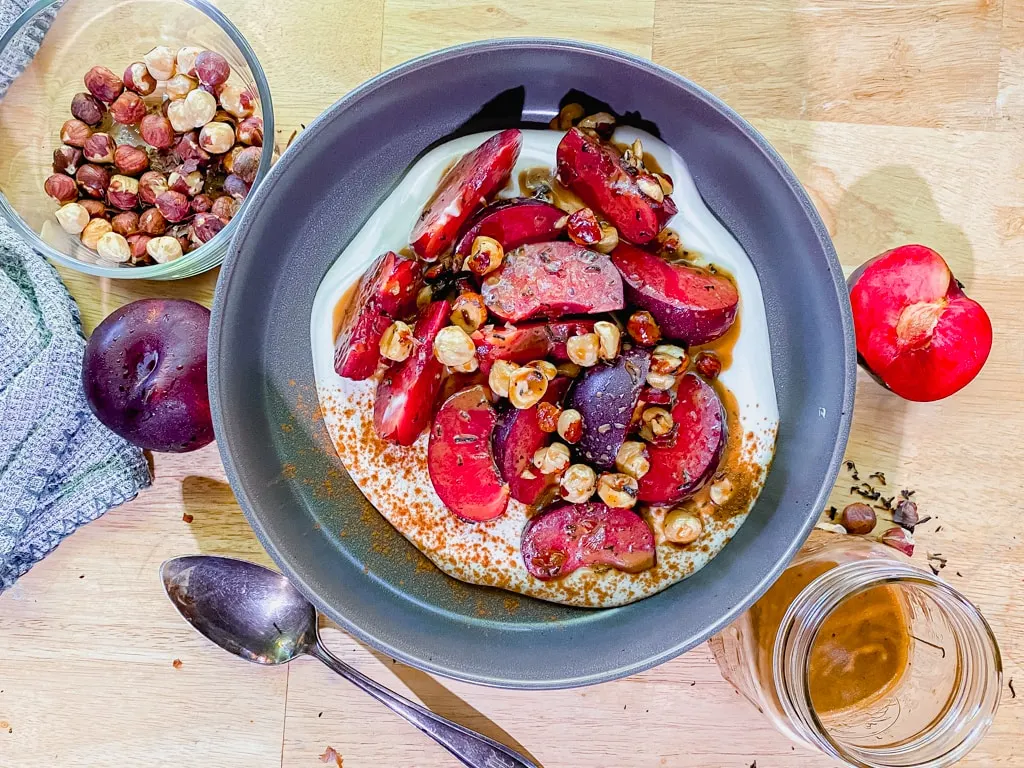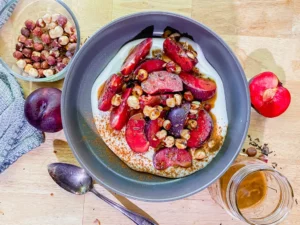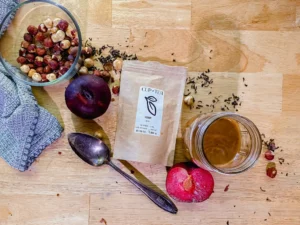You’ve Met Your Match-a
Welcome to the world of ground tea leaves. Matcha is the most popular form of ground tea and has a very long history that started in China. Get your whisks ready, it is time to meet your Match-a.
 Matcha comes from the same tree as green, black, white, pu-erh and oolong teas, Camellia sinensis. Before the practice of steeping tea leaves in a pot, 900 hundred years ago, Chinese monks would grind leaves from the tea trees into a powder and rehydrate them by adding water. Over time the Chinese moved on to steeping the tea leaves in water instead of grinding them into a powder, but the Japanese continued the tradition of grinding leaves like we do today.
Matcha comes from the same tree as green, black, white, pu-erh and oolong teas, Camellia sinensis. Before the practice of steeping tea leaves in a pot, 900 hundred years ago, Chinese monks would grind leaves from the tea trees into a powder and rehydrate them by adding water. Over time the Chinese moved on to steeping the tea leaves in water instead of grinding them into a powder, but the Japanese continued the tradition of grinding leaves like we do today.
How did matcha move from China to Japan? A Japanese Zen priest, who was studying in the Chinese Buddhist monasteries, brought seeds from the Camellia Sinensis tree back to Japan in the 12th century. The young priest, called Eisai, had spent time growing and drinking tea in China. With all this new knowledge, Eisai developed a meditation ritual, which became a practice in his Japanese Buddhist monks community. Eventually his ritual and knowledge spread throughout the rest of Japan. As the word spread the Japanese samurai class were drawn to Eisai’s matcha meditation and adopted the practice. The samurai class turned the mediation into a formal tea ceremony by adding hundreds of detailed steps to the practice, including specific hand movements, the proper design of the tea room, instructions for how to sit, and how it is to be prepared. The tea ceremony was integral to samurai training, helping the warriors sharpen their focus, concentration, and patience in preparation for battle. In time the Japanese tea ceremony adopted many of the same components of the samurai ceremony including the name, “the way of tea”. Furthermore, the ceremony centers around the art of preparing and presenting in an almost meditative fashion with the spiritual principles of harmony, respect, purity, and tranquility that are at the center of the tea ceremony practiced today.
So what is matcha? High quality matcha comes from the tea leaves called tencha. Tencha is shade-grown in order to boost the chlorophyll, flavonols, antioxidants, theanine and caffeine levels in the leaves. Let’s break down the meaning of tencha and matcha for fun… Ten means “mortar” and cha means “tea”. This means tencha translates to “soon to be powdered tea”. Ma translates to rubbed or ground, meaning matcha translates to “ground tea”. There are different grades of matcha, even a culinary grade used for baking. To reap the benefits of matcha, always use high quality matcha.
When it is time to harvest the leaves, only the new spring buds and three leaves are hand-plucked for matcha production. Like most Japanese teas, the leaves are steamed within hours of plucking to halt the oxidation process and bring out the rich green color of the leaves. The next step is different from other teas that are rolled, shaped, and then dried. The tencha is laid flat to dry and then stripped of the stems and veins. After that, the leaves are ground in a slow-turning stone mill. The granite stone mill used to grind tencha into matcha is called a Konomi.
How do you prepare matcha? Traditional preparation of matcha involves a whisk-like tool called a chasen. The key to a perfect cup is to start by sifting ½ tsp of power into your matcha bowl, which is called the chawan. Begin by putting 2 tbsp of warm water into the chawan and sift the matcha into the warm water. Water temperature should not be more than 175 degrees so that you don’t burn the matcha. Add more hot water to the chawn and use the chasen to mix the matcha. Continue adding more water to desired amount and whisk the matcha in a ‘W’ shape without touching the bottom of the chawan. This will create a beautiful froth in time, patience is the key to a good froth. Some people like to prepare their matcha as a “thick tea” called Koicha. Koicha plays a key role in the Japanese tea ceremony where there is a desire to create a drink with a similar consistency to honey by using a larger quantity of matcha. The strength and thickness is completely up to you. You can even add milk or turn it into an iced drink. The sky is the limit to the versatility of matcha.
tea” called Koicha. Koicha plays a key role in the Japanese tea ceremony where there is a desire to create a drink with a similar consistency to honey by using a larger quantity of matcha. The strength and thickness is completely up to you. You can even add milk or turn it into an iced drink. The sky is the limit to the versatility of matcha.
Why drink matcha? First off, matcha is delicious, the flavor and texture can be described as: sweet, grassy, full-bodied, creamy, earthy and slightly nutty. On top of its lovely earthy flavor there are many health benefits to drinking matcha. One amazing benefit to drinking matcha is the stress relieving chemical known as L-theanine. Studies have shown that consuming L-theanine lowers the amount of adrenaline your body uses, which calms the body and makes it much easier to focus. Have you ever gotten shaky hands from drinking too much coffee? That won’t happen with tea because of L-theanine. Another study was recently released on August 2, 2022. This was the world’s first clinical trial on matcha consumption. The trial was assessing whether matcha could have a positive effect on cognition and sleep for older adults showing a decline in cognitive function due to pre-stage dementia. They provided 939 men and women diagnosed with either mild cognitive impairment or subjective cognitive decline 2 grams of matcha in capsules to take every day. The catch being that only 99 of them were actually given matcha, the others were given placebos. With those 99 people, they found that they had an improved quality of sleep and demonstrated “a significant improvement in social cognition”. Learn more: https://www.itoen-global.com/news/pdf/2022/20220803.pdf
Hopefully, you now have a better understanding of the advent and use of matcha. If you have any questions, shoot me off an e-mail at hello@Cupoftea-oregon.com.
Check out this video about the making of a matcha whisk or chasen: https://www.youtube.com/watch?v=ENlUbRObevg
Susie
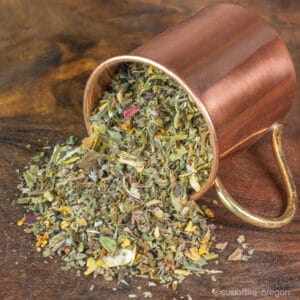 We want to encourage you to add a cup of tea to your nighttime routine. Don’t have a nighttime routine yet? Now is the perfect time to start! Developing a nighttime routine can be very effective in calming yourself in preparation for sleep, improving the quality of your sleep, as well as helping your mind stay centered throughout the following day. Our Relax tea sets the stage by calming you down after your long day. It doesn’t have a sedative effect, the skullcap and catnip calm your tension while hops, peppermint and red raspberry leaf exude calmness and lessen anxiety. Hibiscus flower is believed to aid lower blood pressure. If you have issues with sleep, drink a cup of REM Time an hour before you go to sleep. This is a masterful combination of herbs that relax the mind and body, in order to calm you down and provide insomnia fighting elements so you can get the sleep you need.
We want to encourage you to add a cup of tea to your nighttime routine. Don’t have a nighttime routine yet? Now is the perfect time to start! Developing a nighttime routine can be very effective in calming yourself in preparation for sleep, improving the quality of your sleep, as well as helping your mind stay centered throughout the following day. Our Relax tea sets the stage by calming you down after your long day. It doesn’t have a sedative effect, the skullcap and catnip calm your tension while hops, peppermint and red raspberry leaf exude calmness and lessen anxiety. Hibiscus flower is believed to aid lower blood pressure. If you have issues with sleep, drink a cup of REM Time an hour before you go to sleep. This is a masterful combination of herbs that relax the mind and body, in order to calm you down and provide insomnia fighting elements so you can get the sleep you need.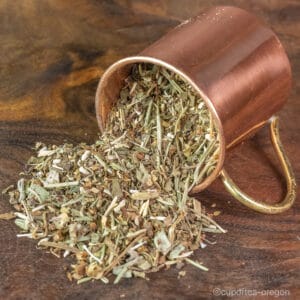




 the leaves left over from the processing and sorting of the teas to sell or the second flush of the season. In order to not waste any of the tea plant, the leftovers are roasted. The charcoal roasting process that Hojicha goes through replaces the grassy flavor present in teas like Sencha, with a comforting smoothness that is both refreshing and rich at the same time.
the leaves left over from the processing and sorting of the teas to sell or the second flush of the season. In order to not waste any of the tea plant, the leftovers are roasted. The charcoal roasting process that Hojicha goes through replaces the grassy flavor present in teas like Sencha, with a comforting smoothness that is both refreshing and rich at the same time.

 tea” called Koicha. Koicha plays a key role in the Japanese tea ceremony where there is a desire to create a drink with a similar consistency to honey by using a larger quantity of matcha. The strength and thickness is completely up to you. You can even add milk or turn it into an iced drink. The sky is the limit to the versatility of matcha.
tea” called Koicha. Koicha plays a key role in the Japanese tea ceremony where there is a desire to create a drink with a similar consistency to honey by using a larger quantity of matcha. The strength and thickness is completely up to you. You can even add milk or turn it into an iced drink. The sky is the limit to the versatility of matcha.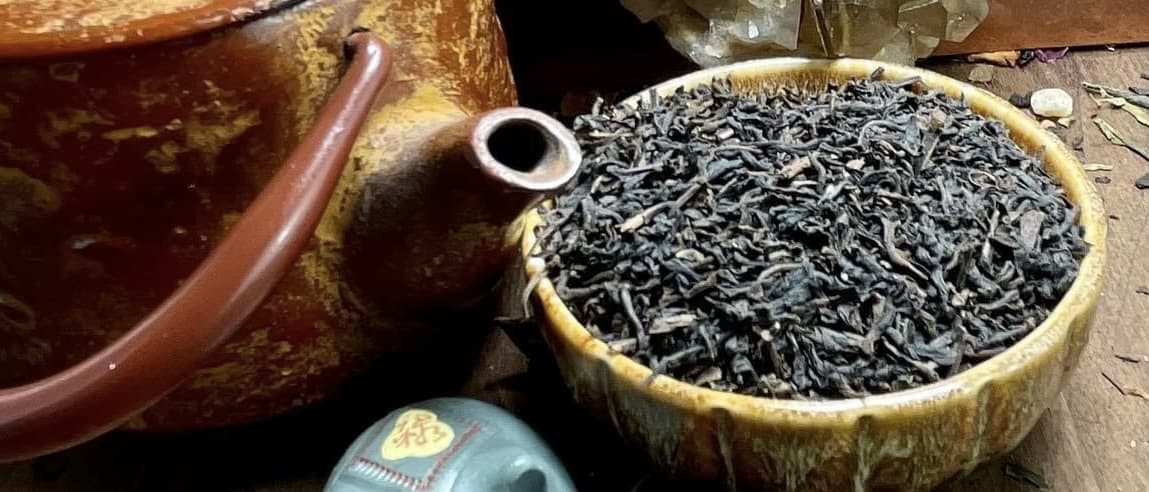
 Like all tea, black tea comes from the Camellia Sinensis plant. What differentiates it from other categories of tea is the dark leaf color and the golden red liquid in your cup. The black color of the leaves comes from the leaves being completely oxidized. Other categories of teas, like green and white tea, are partially oxidized or not oxidized at all. Oxidation is a biochemical reaction also known as “enzymatic browning”. Like tea, it happens to foods like bananas, apples, and avocados when they’re exposed to air.
Like all tea, black tea comes from the Camellia Sinensis plant. What differentiates it from other categories of tea is the dark leaf color and the golden red liquid in your cup. The black color of the leaves comes from the leaves being completely oxidized. Other categories of teas, like green and white tea, are partially oxidized or not oxidized at all. Oxidation is a biochemical reaction also known as “enzymatic browning”. Like tea, it happens to foods like bananas, apples, and avocados when they’re exposed to air.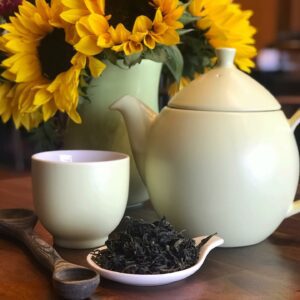
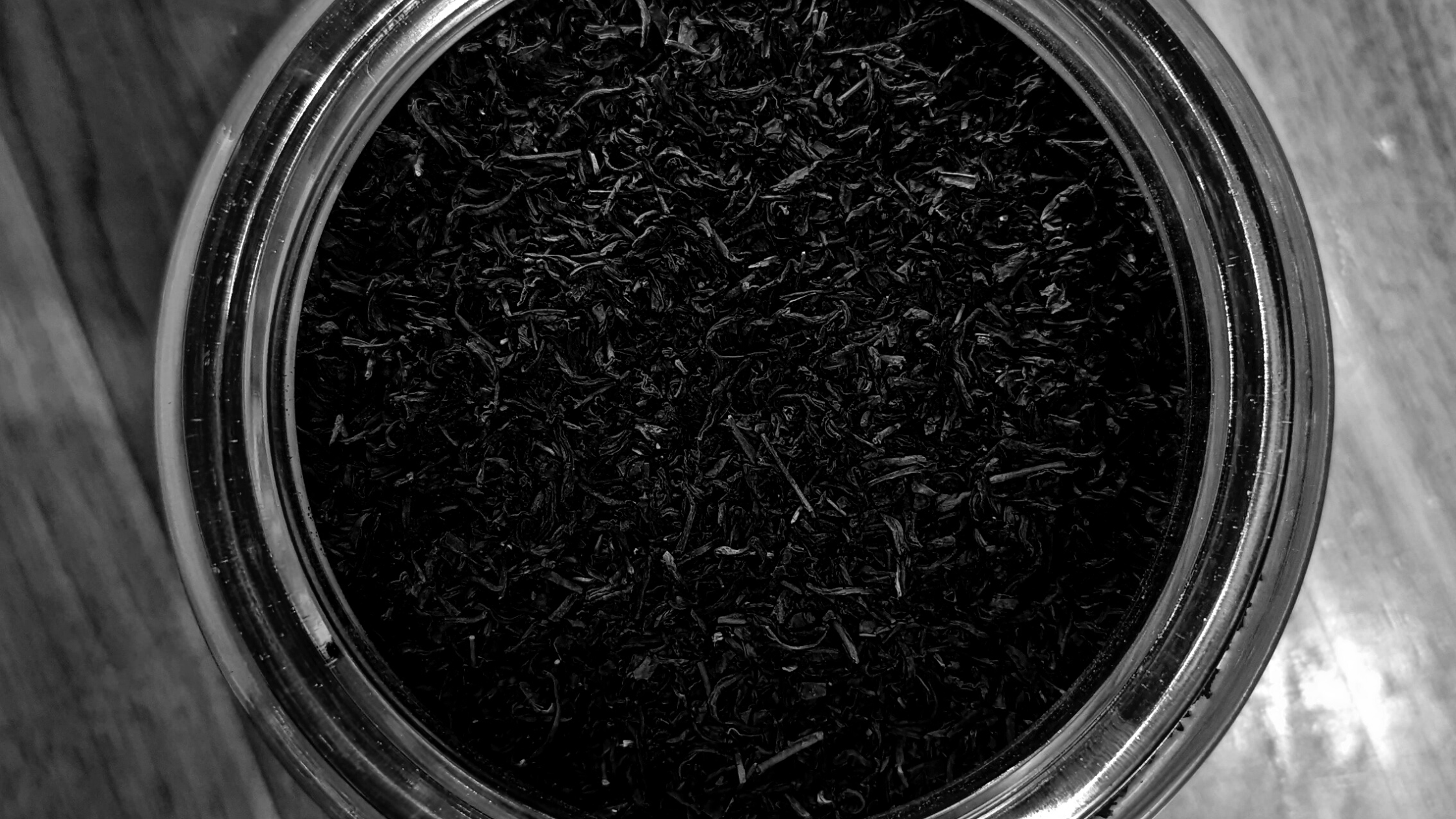
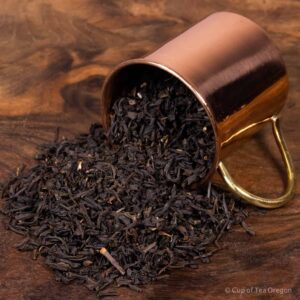


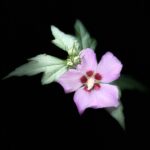 flowers for sale but also have an extensive list of teas featuring hibiscus as a key ingredient. Among my personal favorites are “Happy Hibiscus” and “Current Affair.” These blends showcase the delightful flavors and unique qualities that hibiscus brings to our teas. The bright and cheerful notes of “
flowers for sale but also have an extensive list of teas featuring hibiscus as a key ingredient. Among my personal favorites are “Happy Hibiscus” and “Current Affair.” These blends showcase the delightful flavors and unique qualities that hibiscus brings to our teas. The bright and cheerful notes of “ In 2015 Sally moved into a new homestead in Helvetia, Oregon, with a vision to grow chemical and toxin free medicinal herbs and vegetables. She had grown up eating herbs and drinking tea, two things that brought back good memories of her Grandmother and her in England.
In 2015 Sally moved into a new homestead in Helvetia, Oregon, with a vision to grow chemical and toxin free medicinal herbs and vegetables. She had grown up eating herbs and drinking tea, two things that brought back good memories of her Grandmother and her in England. I am happy to report that Sally’s daughter is now doing well and less than a year after treatment stopped, a true miracle arrived that shocked everyone including her medical team, a beautiful, healthy grandson. Everyone is doing great and George is now helping his Grandma in the garden with the hope that he will pass on all this knowledge to the next generation!
I am happy to report that Sally’s daughter is now doing well and less than a year after treatment stopped, a true miracle arrived that shocked everyone including her medical team, a beautiful, healthy grandson. Everyone is doing great and George is now helping his Grandma in the garden with the hope that he will pass on all this knowledge to the next generation!